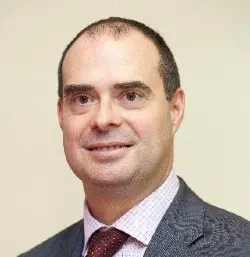TRANSFORMATION | 28.12.2020
Life is a beautiful journey: If we do not learn the lessons, it will all have been in vain

Jesús Monclús
Director de Prevención y Seguridad Vial, Fundación MAPFRE
The year 2020 will remain forever in the history of humankind. Everything came to a halt with the arrival of the pandemic: Traffic in Spain fell by around 70 percent during the lockdown of March and April, with the number of road fatalities dropping by a similar amount. In Madrid, there was a 90 percent decline in victims between mid-March and the end of April .
However, there were increases in speeding, distracted driving and driving under the influence of alcohol or drugs as a result of the “empty roads” effect and the stress, worry and reduced police monitoring during those weeks, with traffic agents focused on other, more urgent tasks. There was a huge drop in the use of intercity transport of all kinds (bus, train or plane). With no vehicles on the road, air pollution in cities also declined dramatically and many people could once again see the mountains surrounding their cities.
Despite the general lack of movement and with a great deal of public transport becoming essential services—often without sufficient and fair recognition—the subway, taxis, on-demand mobility services and urban buses guaranteed the movement of other essential workers and delivery drivers provided daily supplies to the entire population on roads with few service stations or other rest areas.
As the world began to wake up and gradually move again, the messages from the authorities changed in a matter of hours from “the best way to keep distance between people is to use private transport (cars)” to “use bicycles or scooters and get back on public transport as it is safe,” for the sake of sustainability. Public transport is clearly a vital part of urban mobility, as we were reminded in Fundación MAPFRE’s June 2020 webinar[1]; and it seems that CO2 concentration inside public transport vehicles may be even lower than in other everyday environments[2]. The webinar also defended the role of the occupational risk prevention services in businesses and organizations in ensuring the safe mobility of workers as they returned to their normal workplaces.
Some cities, like Barcelona or Bogotá, quickly took advantage of the situation using tactical urbanism to make room for cyclists[3] [4] and pedestrians, turning motor vehicle lanes into cycle lanes, wider sidewalks or spaces for bar and restaurant terraces. In other cities, perhaps because of their greater inertia, changes have been barely noticeable. Bike stores ran out of inventory, something previously unheard of. In this case, as has been the case with remote working, the sustainable mobility policies of this first type of city have made the sort of progress in a few months that would otherwise have taken years. In September 2020, Fundación MAPFRE made another contribution by publishing a new online manual on safe, healthy and sustainable mobility[5].
At the end of 2020, public transport was still some way from returning to its usual level of service. Despite the policies, in Barcelona one in three citizens had changed their usual mode of transport due to the crisis and almost twice as many people use their car to go to work or study as before the pandemic[6].
Will we return to the same pre-crisis levels of traffic jams, air pollution, etc.? Time will tell. If we do not learn anything from our experience, it will have all been in vain. A recent meeting of the Mobility Pact in Barcelona stressed how European recovery funds were also a unique opportunity to establish changes to more sustainable mobility.
But, as a final message, we should remember one thing. On November 20, Fundación MAPFRE organized a webinar on child road safety with the Pan American Health Organization in Argentina and the National Road Safety Agency of Argentina. On that same day, the number of global deaths from COVID-19 reached 1,349,000 people, exactly the same figure as the global death toll from traffic accidents; however, in the latter case this occurs annually.
The difference then was that we had already had a vaccine to reduce traffic fatalities for many years, one which we haven’t chosen to use: drive a little slower, concentrate fully, have more empathy, provide more road safety education, etc. The good news is that we just have to use it!
[1] https://www.fundacionmapfre.org/fundacion/es_es/programas/formacion/cursos-formacion-e-learning/webinar-experiencias-movilidad-laboral-covid-19.jsp
[2] https://www.elconfidencial.com/tecnologia/ciencia/2020-11-18/covid-19-medidor-co2-48-horas_2836300/
[3] https://www.elconfidencial.com/tecnologia/2020-10-11/boom-bicis-ciudades-espanolas-coronavirus-transporte_2781843/
[4] https://elpais.com/clima-y-medio-ambiente/2020-11-28/bogota-la-capital-ciclista-de-latinoamerica-aprovecha-la-pandemia-para-dar-otro-impulso-a-la-bicicleta.html
[5] https://manualmovilidadsegura.fundacionmapfre.org/
[6] https://fundacion.racc.es/informes-y-estudios/seguridad-vial/personas/estudio.-la-movilidad-en-barcelona-en-la-nueva-normalidad
